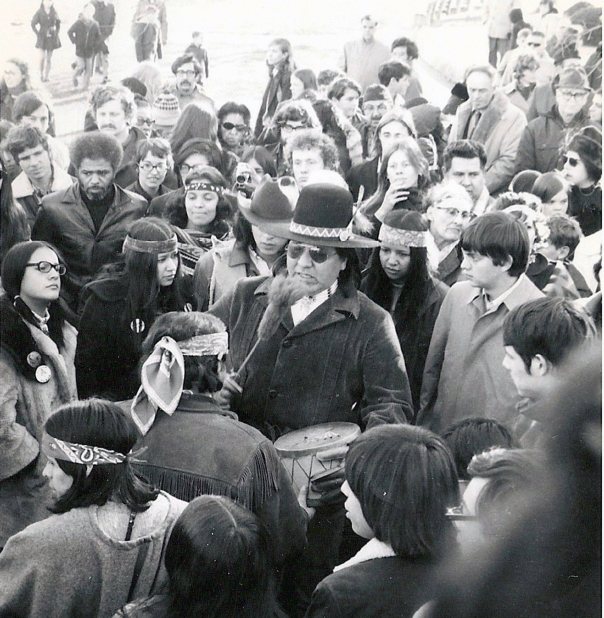
The first National Day of Mourning took place in 1970 in Plymouth, Massachusetts. Photo from Many Hoops
Professor Peter d'Errico discusses The Mourning Road to Thanksgiving
A new historical and cultural novel by Larry Spotted Crow Mann (Nipmuc), The Mourning Road to Thanksgiving, challenges the stereotypical American holiday tradition. The story centers on the experiences of a 40-year-old Nipmuc man coming to terms with his life experiences in the midst of family and societal crosscurrents. Mann's writing evokes memories of struggle, leavened with humor and laughter, as it moves toward a resolution of cultural contradictions built into the notion of Thanksgiving in America. November was declared "Native American Heritage Month" in 1990, when President Bush first signed a joint resolution of the U.S. Congress to that effect. Previously, a variety of days and weeks had been declared to "honor" Indians, sometimes at the behest of Indian leaders and organizations. Even when promoted by Indians, however, it seems the theme was more identity politics than historical honor: images of feathers and drums, rather than a time of reflection about American history. Mann's novel plays with all this, managing to work through the ways Indian identity politics affect Indians as well as non-Indians. The story opens with his protagonist, Neempau, returning home after a decade or more away. Neempau has been radicalized not only by his experiences of anti-Indian racism, starting in grade school, but by his involvement with the National Day of Mourning movement begun in the 1970s by United American Indians of New England.Get the Story:
Peter d'Errico: Thanksgiving vs. the National Day of Mourning (Indian Country Today 11/13)
Join the Conversation